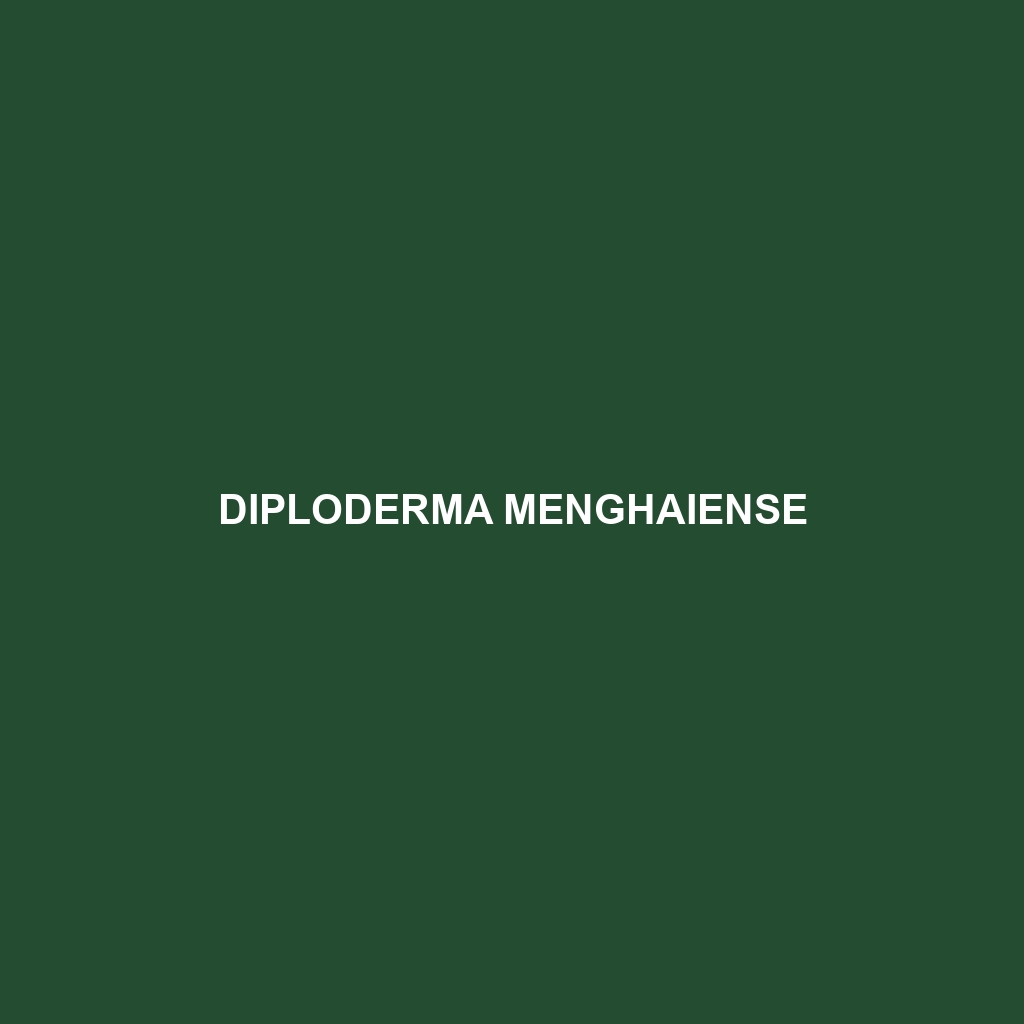Species Description: Diploderma menghaiense
Common Name: Diploderma menghaiense
Scientific Name: Diploderma menghaiense
Habitat: Diploderma menghaiense is primarily found in the mountainous regions of southeastern Asia, particularly in the forests of Southwest China. These lizards prefer humid, temperate environments often rich in biodiversity, specifically in areas with heavy underbrush and plenty of rocky crevices that offer protection and hunting grounds.
Physical Characteristics: This species is characterized by its medium size, typically reaching lengths of about 20 to 30 centimeters. The skin of Diploderma menghaiense is a striking mixture of green, brown, and gray hues, allowing it to blend seamlessly into its forested surroundings. Notable features include elongated limbs, a flattened body, and distinct scales, which help in camouflage. Its unique coloration and patterns serve as effective adaptations for hiding from predators.
Behavior: Diploderma menghaiense is primarily a diurnal species, displaying activity during the daytime. These lizards are known for their climbing abilities, and they often take to trees and rocks in search of food or refuge. They exhibit territorial behavior, particularly during mating seasons, and can often be seen performing display rituals to communicate with other members of their species.
Diet: The diet of Diploderma menghaiense consists mainly of insects and other small invertebrates, making it an insectivore. Their feeding habits reflect a preference for crickets, beetles, and other arthropods found in their natural habitat. This diet plays a significant role in regulating the population of these insects within the ecosystem.
Reproduction: The reproductive habits of Diploderma menghaiense typically occur during the warm months, with mating observed in late spring. Females lay eggs in nests dug into the ground, where they can camouflage effectively. Offspring emerge after an incubation period of about 45 to 60 days, and they are independent from birth, requiring no parental care.
Conservation Status: Diploderma menghaiense is currently classified as Vulnerable by the IUCN Red List. Factors contributing to its vulnerable status include habitat loss due to deforestation and urban development, as well as climate change, which affects its natural environment. Conservation efforts are essential to protect this species and its habitat.
Interesting Facts: One fascinating aspect of Diploderma menghaiense is its remarkable ability to change color slightly to adapt to its surrounding environment, providing excellent camouflage against predators. Additionally, these lizards have a unique defense mechanism where they can play dead when threatened, further enhancing their chances of survival.
Role in Ecosystem: Diploderma menghaiense plays a vital role in its ecosystem by controlling insect populations and serving as prey for larger predators. Its presence indicates a healthy environment, contributing to the overall biodiversity and stability of the forest habitats it inhabits. The intricate interactions between Diploderma menghaiense and other species highlight its importance in maintaining ecological balance.
